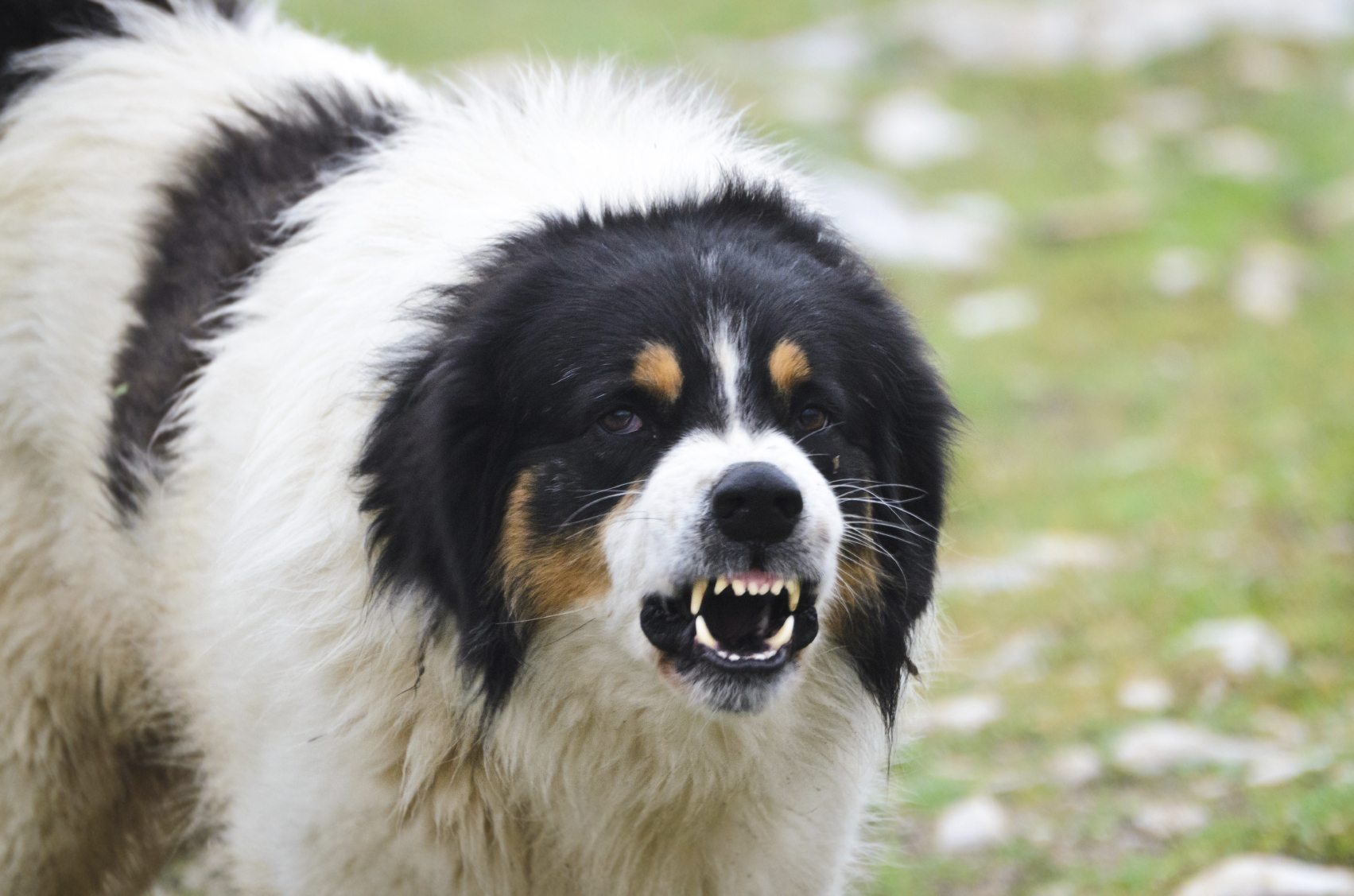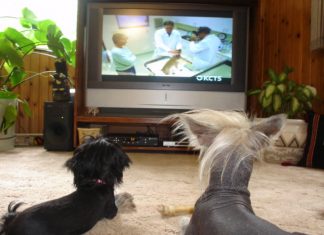It’s important to understand why dogs bite and to follow the safety tips below around all dogs, including those in your home.
Why Dogs Bite
The vast majority of dog bites are the result of an inappropriate approach to the dog. Dog bites happen when the dog is fearful or hurt and s/he feels there is no other way to avoid you.
Whether you are in close proximity to the dog or far away, the things you do as you get closer to the dog can make all the difference in the world. The tips below are for humans walking without a dog only. If you see a dog on or off leash while you are walking your dog, it is best to keep going or turn around and go the other way. Your dog, being on a leash, is at a distinct disadvantage to meet an off-leash dog, and two dogs on leashes meeting is usually a bad idea.
10 Ways To Avoid a Dog Bite
1. When meeting a new dog, find a way to allow the dog to approach you, as opposed to you walking towards the dog. Sitting down or squatting to a low crouch is ok, but do not hold your hand out for the dog to sniff you. For some dogs, this can come across as being an unsafe move on your part, which could cause a dog to bite that hand.
2. If the dog growls, turn your head away and do nothing. Chances are that this dog will leave you alone and leave the area.
3. Take precaution when approaching a dog on a leash. If the dog is not on a leash, or does not appear to have a human guardian nearby, the above advice is even more important. Let the dog come to you and sniff and see what he does. You should remain calm and do not make any fast movements. If he does come to you, that’s a good sign, but you still should not attempt to pet the dog. If the dog stays with you of his own accord, talk to him a little and see if he has been around people enough to understand the word “sit”. If he is still around at this point, and seems calm, you can slowly move your hand to his chest area and gently pet him there.
4. Do not make direct eye contact with a dog that seems skittish or fearful. Look at the ears and tail. Ears that are pinned back and a tucked tail are two indications that the dog is not comfortable. Piloerection (hair standing up on back) is another clear indication that he is not comfortable. Turn around and leave this dog alone.
5. Refrain from approaching a tethered dog. Some establishments have an area where they can tether their dog outside while shopping. If the dog is tethered to an object, the odds of this dog biting someone who comes close are increased. Children are likely candidates to be lured by the desire to pet a dog who is waiting for their guardian to return. Most people should not approach this dog at all. Very few dogs are comfortable in this situation. If you think the dog needs assistance, contact the management of the establishment. They should page the guardian who can assist the dog.
6. How To Check For Identification. When you see a dog who appears to be lost and you want to check for identification, follow the directions in Tip # 4, and then offer the dog a drink of water. Ideally, you should place a bowl on the ground and pour some water into it, then step away and sit down. If the dog is nervous he will likely be thirsty and this will help him to trust you. After he drinks, he may come back to you, at which time you can check for identification on his collar.
7. Never hug a dog. This is a very unnatural behavior for dogs to experience. While your own dog may tolerate a hug from you, it doesn’t mean he should have to. Children love to hug dogs and it is risky business to allow a child to practice this. Teach your children to respect the dog and to pet him on the chest only.
8. Never put your face close to an unknown dog – this is another very unnatural behavior for dogs to experience. Even your own dog probably doesn’t like this. If you look at photos of people (adults and children alike) who are either nose to nose or hugging a dog, you can often see the stress in that dog. It may be ears that are pinned back, or an expression that looks like the dog is panting and you can see folds in the skin on the dogs face. The photos below show the same dog in two different shots. Look at the difference in the dog when he is next to the owner as opposed to being “hugged”.

9. Remember to use common sense. If the dog is with his guardian and is wiggling his whole body when he sees you, ask the owner if you can pet their dog and the answer will likely be “yes, please do!”. Otherwise, be safe and respect the guardian and their dog. A nice comment to the guardian complementing the dogs’ looks or behavior is the best thing to do. Then you can go home and play with your dog!
10. Know your own dog. Last but not least, be sure your own dog does not feel a need to bite you or another family member. Pay attention to your dog whenever there are major changes in your life, because this will affect your dog too. Change is difficult for dogs, and things such as a child moving away, a job/schedule change, a new baby in the house, a sudden change in a family members’ health are all going to be noticed by your dog. Have you ever noticed a reaction from your dog when you pack your suitcase? You probably would if this is likely to mean an extended stay at the vet’s office for boarding. Planning a big party at your house with lots of strangers? If this is not a regular event then be sure to take your dog into consideration. Some one-on-one play or regular exercise can go a long way in helping your dog stay calm when things are crazy at home.
Additional information, training material and resources on bite prevention can be found at:
Featured Image: iStock







